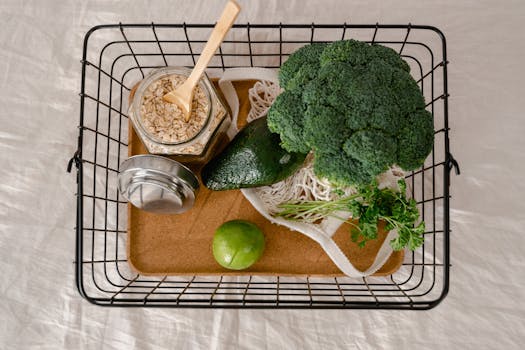Saving Strategies
The Envelope System: Simple Budgeting With Lasting Results
Explore how the envelope system turns cash into categorized budgets so you spend smarter not harder. Make your money last and gain real control—no tech needed, just simple steps.
Advertisement
Managing money can feel overwhelming, but breaking down finances into tangible steps builds real confidence. One such method, known as the envelope system, quietly reshapes daily spending habits for the better.
Budgeting tools evolve, but some techniques stick because they deliver. This age-old routine matters for anyone wanting consistency and clarity with their cash—with benefits reaching beyond the monthly bills.
Consider this your hands-on guide. We’ll explore real-life advice, practical checklists, and genuine scripts so you can confidently use the envelope system in your own life.
Getting Started With Cash: Clarity For Your Daily Choices
Switching to a cash-driven approach brings spending into focus the moment a purchase happens. When you physically separate money into envelopes, each transaction becomes a conscious decision instead of a digital blur.
Anyone can start. Grab blank envelopes and label them: rent, groceries, gas, entertainment. Then allocate your budget for each category using only the cash you deposit—no overspending by accident.
Determine Your Budget Categories Clearly
Lay out your typical month on paper using real expenses. For example, write $700 rent, $120 groceries, $60 gas, $75 dining out—categories as specific as you genuinely use.
Avoid lumping essentials and fun together. Groceries deserve their own envelope, different from snacks or takeout. The simple act of sorting makes you notice patterns you might ignore with a card.
Hold an envelope for each main category. If an envelope runs empty, the spending stops there—no borrowing from “tomorrow you.” That’s the rule anchoring your discipline.
Set Realistic Limits That Reflect Your Actual Life
Look through your last two months’ bank statements line by line. Say aloud, “If I had to stuff this envelope with enough cash on payday, would it last until the end of the month?”
Choose limits that still let you enjoy your life—$150 for groceries doesn’t help if it means skipping meals. Your categories must reflect what you truly spend, not wishful thinking.
Take the total of all envelopes and make sure you aren’t allocating more than you bring home. The method works only when zero dollars remain unassigned by payday.
| Expense Category | Suggested Envelope Amount | Spending Habit Trigger | Immediate Action To Take |
|---|---|---|---|
| Groceries | $120/week | “I shop when I’m bored.” | List meals before shopping |
| Gas | $60/week | “I drive without planning stops.” | Batch errands to conserve |
| Dining Out | $40/week | “I eat out when tired.” | Meal prep easy dinners |
| Entertainment | $30/week | “I buy to celebrate Fridays.” | Schedule free events |
| Clothing | $25/month | “Impulse sales emails.” | Unsubscribe from lists |
Making The System Practical: Living Day-To-Day With Envelopes
Creating envelopes is just the starting point. You’ll actually interact with your envelopes nearly every day—at the grocery store, gas station, or making weekend plans.
Each time you pull out cash from a labeled envelope, your brain marks the transaction as significant. This awareness curbs mindless swiping and encourages thought-out choices.
Stay Accountable With Visual Cues
Place your envelopes in a visible location—front of your wallet or purse, not the bottom of a bag. This keeps your budget front and center every time you reach for money.
At the register, pull money just from the right envelope. If your “Groceries” envelope feels thin, narrate to yourself: “I’ll swap out that name-brand cereal for store brand today.”
- Hold your envelopes together with a binder clip to avoid mixing funds; this saves time at checkout.
- Talk through each purchase aloud, “This comes out of groceries,” reinforcing which categories you value.
- Check the remaining cash before each transaction, making quick mental notes like, “Only $25 left for the week.”
- Write each purchase directly on the envelope. Tracking amounts visually prevents overestimating your leftover budget.
- Place empty envelopes in a separate spot, signaling it’s time to pause further spending in that category.
Small changes, like pausing for a second before spending from an envelope, raise your awareness—and help break habitual overspending.
Build Habits With Weekly Envelope Check-Ins
Every Sunday night, spend five minutes with your envelopes. Lay them out, count what’s left, and quickly write down any large or unexpected expenses you made.
If you overspent in one area, don’t move money from another envelope right away. Instead, jot down what pushed the extra cost and brainstorm how you’d handle it next week.
- Pick a consistent day for check-ins to reinforce habit—same time each week works best.
- Invite your partner or roommate to join if you’re budgeting together for added accountability and faster decision-making.
- Snap a photo of your envelopes if you need to recall totals during weekday shopping.
- Decide what to do with leftover funds: add them to next month or start a small “extras” envelope for rewards or emergencies.
- Write the new totals right then—no waiting until next paycheck, which risks losing track.
By making envelope check-ins a regular habit, you stay alert to shifting spending each week and adjust early—before small leaks become big surprises.
Fine-Tuning For Different Lifestyles
No two households share the same spending patterns, so shape your envelope system around your situation. No need to cram your life into someone else’s template—flexibility is your asset.
Single Professional Setting A Monthly Grocery Envelope
A recent grad living alone notices how easily food spending gets out of hand with food delivery apps. They set a rule: $200 into “Groceries” each month—no extra trips until the next deposit.
To build consistency, they post a simple script on the fridge: “If cash is gone, I cook from pantry.” It’s not only about restraint but making doable plans when funds run low.
After the first month, they notice $30 left over—clear proof they can probably budget even tighter next month.
Household Combining Incomes Adjusts The Categories
Two partners join budgets and realize their spending priorities differ. Together, they outline exactly what goes in each joint envelope (utilities, date nights, groceries), then set separate envelopes for personal spending.
During check-ins, they say, “We each get $50 for hobbies, so let’s agree on that upfront.” If money runs out, there’s no debate because rules were agreed upon early.
This arrangement lowers friction because individual envelopes preserve independence, while shared ones make household bills transparent. Their system evolves but sticks to shared rules for clarity.
Troubleshooting Roadblocks As They Arise
Sticking to cash can feel strict at first, and unexpected bills or emergencies can throw off the best-laid plans. The envelope system adapts best when you anticipate real-life bumps.
Prepare For Emergencies: Create A Buffer Envelope
Set aside a dedicated “Buffer” envelope funded with small amounts from each paycheck. Even $5 here and there builds up, cushioning against last-minute expenses like car repairs or missed work shifts.
Each month, move unspent cash from other categories into this envelope, labeling it as untouchable for routine expenses. Only dip into it for verifiable emergencies—an exact script might be, “Is this a true need, or can it wait?”
Regularly replenishing this buffer makes using the envelope system sustainable, and turns emergencies into annoyances rather than financial setbacks.
Liquid Alternatives For Online Expenses
In a digital world, some transactions—like monthly subscription services or online utility payments—require non-cash solutions. For these, create a “digital envelope” on paper, tracking what you deduct from your debit card every week.
Write down each online transaction as if you’d spent the physical cash. Color-code it or use a spreadsheet as your virtual envelope. Only buy online within these self-imposed limits, saying, “Am I spending envelope money for this?” before clicking ‘buy.’
This ensures your card spending doesn’t sabotage envelope discipline, and you stop overspending just because it isn’t physical cash.
Connecting The Envelope Method To Your Bigger Picture
The point isn’t just reducing waste day by day. Over time, using the envelope system builds consistent spending habits, self-awareness, and financial peace. More control leads to less stress about money overall.
Track Patterns To Improve Future Budgets
Compare your envelopes month to month. You might spot, “I consistently underspend on gas and overspend at coffee shops.” Adjust the amounts so your system reflects how you truly live, not how you wish you lived.
Instead of blaming yourself for mistakes, treat every month as a learning experiment. At each check-in, note what worked: “Bringing lunch to work left more for weekend fun.” Replicate what makes budgeting easier for you.
This process makes the envelope system evolve—as you adapt, your results improve, and your stress shrinks.
Celebrate Wins And Reinvest Surplus
At the end of a good month, checking your envelopes and finding extra creates a burst of satisfaction. Make a rule: reward yourself by putting a portion into a fun envelope—maybe dining out or a mini-getaway.
For ongoing motivation, post reminders: “Surplus funds mean you stayed on track!” This reinforces positive feedback without guilt about rare splurges.
Reinvesting leftovers into savings or treats makes discipline sustainable, encouraging you to stick with the system for the long haul.
Building A Support Network And Staying Motivated
Sticking to a cash routine becomes easier when you get social support—whether from friends, family, or a dedicated budgeting group. Share wins and hiccups for encouragement and advice.
Share Your Goals For Outside Accountability
Verbalizing goals to someone else builds accountability. Even a simple text, “Holding my entertainment envelope to $30 this month,” creates social reinforcement and healthy pride about smart moves.
Encourage friends to join—even one shared check-in a month makes the experience more fun and interactive.
If you’re budgeting with a partner, hold quarterly sit-downs to discuss what’s working, keeping tone positive and solutions-focused.
Refresh The System To Stay Engaged
Over time, routines get stale. Refresh your envelopes with new labels, fun colors, or motivational notes like “Big goals, small steps.” This visual reset can make the task feel fresh and intentional.
Swap boring categories for short-term saving envelopes—concert tickets, vacation, new shoes—to motivate ongoing participation in the envelope system.
Every few months, set a fun challenge: who can stick to dining out limits best, with the winner deciding the month’s surplus spending treat?
Why The Envelope System Endures
The core benefit of the envelope system lies in how it builds tangible awareness of every dollar spent. That awareness grows into habits, and habits become real savings.
This approach sidesteps overwhelm by letting you live one envelope, one category at a time. For those who crave a sense of financial calm, this method offers proven results—no smartphone apps required.
By experimenting with categories, rules, and routines, anyone can create a spending plan that matches their life stage. Small, sustained adjustments bring better financial health one week at a time.
Frequently Asked Questions
What exactly is the envelope system in budgeting?
The envelope system divides your cash into spending categories—like groceries, rent, and entertainment—each represented by a labeled envelope. You only spend what’s in each envelope for that purpose until your next budgeting period.
Can digital envelopes replace physical cash?
Digital envelopes—like spreadsheets or budgeting apps—help mimic this system if you rarely use cash. Track virtual balances after each expense and abide by your own category limits to get similar awareness and control.
How should I handle unexpected expenses or emergencies?
Dedicate an envelope or digital equivalent just for emergencies. Each pay period, add a small amount. Only use it for true, unforeseen needs—never routine overspending. Review it each month to keep it funded.
What if I run out of cash in an envelope before the end of the month?
If an envelope runs empty, stop spending on that category until your next budgeting cycle. This reinforces careful planning. If shortfalls are frequent, adjust that category next month for more realism.
Does the envelope system work for irregular incomes?
Yes—simply base envelope amounts on your lowest average monthly income, not the highest. After earning more than expected, consider adding those extras to a savings or “buffer” envelope for leaner periods.





